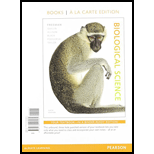
Concept explainers
Introduction:
The reproduction in which the offspring arises from a single organism and genes of only one parent are inherited is called asexual reproduction. The fusion of gametes, changes in the chromosomes, and crossing over are not involved in asexual reproduction.
Answer to Problem 1TYK
Correct answer:
The term parthenogenesis refers to a mode of asexual reproduction, which involves the development of the offspring from unfertilized eggs.
Explanation of Solution
Explanation/Justification for the correct statement:
Option (a) is given as parthenogenesis. The reproduction process where the offspring develops from an ovum without fertilization is called as parthenogenesis. It is the process where offsprings are generated by mitosis, or by meiosis, or by the fusion of two of the products of meiosis. Parthenogenesis occurs in a wide diversity of lineages, including certain invertebrates, fishes, lizards, snakes, and birds. This process usually is observed in some invertebrates, fishes, lizards, snakes, birds, and plants. It is a form of asexual reproduction. The embryos develop without fertilization. Hence, Option (a) is correct.
Explanation for incorrect answers:
Option (b) is given as budding. Budding is also a type of asexual reproduction. The new organism develops from a bud or an outgrowth with the help of cell division. The yeast cells also produce a small bulb-like structure called the bud. So, it is incorrect.
Option (c) is given as regeneration. The process of restoration, renewal, and growth is called regeneration. The process of regeneration is used in cells, organisms, genomes, and others. In some animals, some parts of the body can be regenerated. So, it is incorrect.
Option (d) is given as fission. The fission is the process of division of a single cell or an entity, which generates two or more parts. These parts develop into separate entities independent of each other. Most of the cells undergo fission. A single-celled organism such as Paramecium and Amoeba undergo binary fission. So, it is incorrect.
Hence, options (b), (c), and (d) are incorrect.
The type of reproduction, in which the offspring develops from the unfertilized eggs, is called parthenogenesis.
Want to see more full solutions like this?
Chapter 47 Solutions
Biological Science, Books a la Carte Plus Mastering Biology with Pearson eText -- Access Card Package (6th Edition)
- Molecular Biology Explain/discuss how “slow stop” and “quick/fast stop” mutants wereused to identify different protein involved in DNA replication in E. coli.arrow_forwardMolecular Biology Question A gene that codes for a protein was removed from a eukaryotic cell and inserted into a prokaryotic cell. Although the gene was successfully transcribed and translated, it produced a different protein than it produced in the eukaryotic cell. What is the most likely explanation?arrow_forwardMolecular Biology LIST three characteristics of origins of replicationarrow_forward
- Molecular Biology Question Please help. Thank you For E coli DNA polymerase III, give the structure and function of the b-clamp sub-complex. Describe how the structure of this sub-complex is important for it’s function.arrow_forwardMolecular Biology LIST three characteristics of DNA Polymerasesarrow_forwardMolecular Biology RNA polymerase core enzyme structure contains what subunits? To form holo enzyme, sigma factor is added to core. What is the name of the structure formed? Give the detailed structure of sigma factor and the function of eachdomain. Please help. Thank youarrow_forward
- Molecular Biology You have a single bacterial cell whose DNA is labelled with radioactiveC14. After 5 rounds of cell division, how may cells will contain radioactive DNA? Please help. Thank youarrow_forward1. Explain the structure and properties of atoms and chemical bonds (especially how they relate to DNA and proteins). Also add some pictures.arrow_forward1. In the Sentinel Cell DNA integrity is preserved through nanoscopic helicase-coordinated repair, while lipids in the membrane are fortified to resist environmental mutagens. also provide pictures for this question.arrow_forward
- Explain the structure and properties of atoms and chemical bonds (especially how they relate to DNA and proteins). Also add some pictures.arrow_forwardIn the Sentinel Cell DNA integrity is preserved through nanoscopic helicase-coordinated repair, while lipids in the membrane are fortified to resist environmental mutagens. also provide pictures for this question.arrow_forward1. Explain how genetic information is stored, copied, transferred, and expressed. Also add some pictures for this question.arrow_forward
 Concepts of BiologyBiologyISBN:9781938168116Author:Samantha Fowler, Rebecca Roush, James WisePublisher:OpenStax College
Concepts of BiologyBiologyISBN:9781938168116Author:Samantha Fowler, Rebecca Roush, James WisePublisher:OpenStax College
 Comprehensive Medical Assisting: Administrative a...NursingISBN:9781305964792Author:Wilburta Q. Lindh, Carol D. Tamparo, Barbara M. Dahl, Julie Morris, Cindy CorreaPublisher:Cengage LearningEssentials of Pharmacology for Health ProfessionsNursingISBN:9781305441620Author:WOODROWPublisher:Cengage
Comprehensive Medical Assisting: Administrative a...NursingISBN:9781305964792Author:Wilburta Q. Lindh, Carol D. Tamparo, Barbara M. Dahl, Julie Morris, Cindy CorreaPublisher:Cengage LearningEssentials of Pharmacology for Health ProfessionsNursingISBN:9781305441620Author:WOODROWPublisher:Cengage





